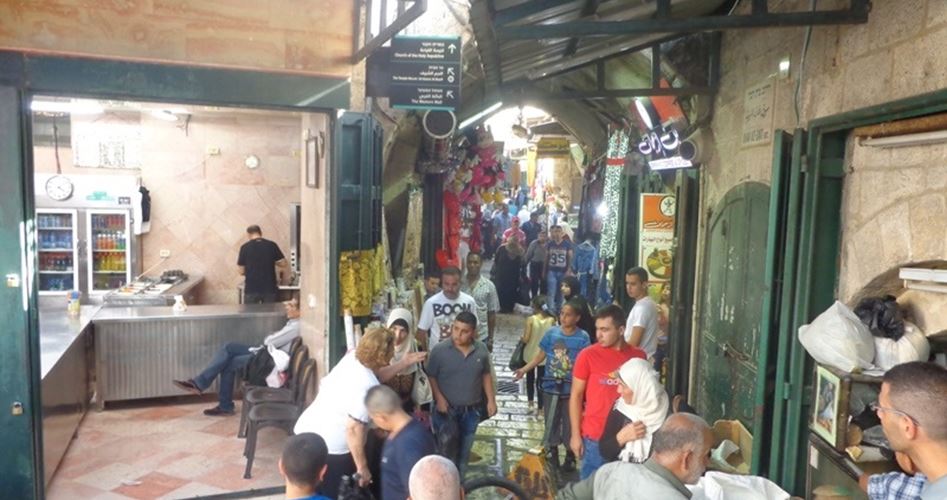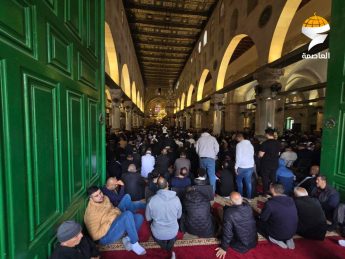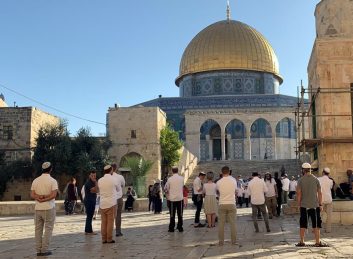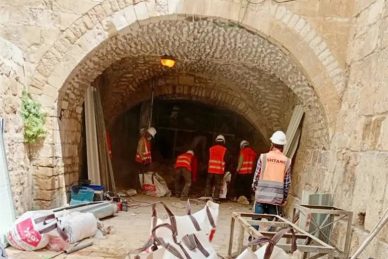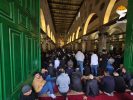The market of Khan Al-Zayt in Jerusalem is crowded with shoppers; it is the first market at the entrance to the city and its oldest one and the main entrance to the markets of the Old City of Jerusalem.
The market was named as such because of the existence of a Khan (hotel) inside it since the Mamluk period which was used as a store by farmers producing olive oil. The Khan located between the Mufti and Tikkiyah buildings was later transformed into houses for Jerusalemites or shops serving shoppers.
The market of Khan Al-Zayt was built throughout several stages the first of which was during the Mamluk era in the late 14th century. After that the buildings and shops began to gradually increase and some of them were renovated during the Ottoman era. The number of shops is 108 and it is one of the largest markets in the Old City where goods and diversity of shops are there based on the need of consumers in Jerusalem.
In the center of the market is a church that represents the seventh stage of the Path of Sorrow of Christ and there are three alleys at the beginning middle and end that lead to the Christian Quarter in the Old City.
Dr. Youssef Al-Natsheh Director of the Department of Tourism and Antiquities at Al-Aqsa Mosque told the PIC reporter that Khan Al-Zayt Market is a long one with shops on both sides of it and its floor is paved with stone tiles that characterize the city of Jerusalem. The first part of the market extends from the intersection connecting the northern market to the Christian Quarter and Al-Mufti building. This part of the market is not roofed but the rest of it is roofed with stones to protect its visitors from heat and rain.
The way the market is roofed is characterized by a series of contracts with cross vaults in the center of which there are large openings for lighting and ventilation. This architectural fabric probably dates back to the Mamluk era although it was repaired several times later according to Natsha.
Khan Al-Zayt and Souq Al-Attarin markets are two of the most important markets in the city. The shops of Khan Al-Zayt markets offer mostly modern consumer goods with a rich diversity to meet the needs of the residents and visitors such as popular restaurants nuts and sweets shops including Falafel meat and vegetable shops and tourist items. Thus this market has lost its traditional specialization of manufacturing soap under the pressure and development.
Dr. Najih Bakirat a specialist in the history of Jerusalem and Al-Aqsa says that Khan Al-Zayt market is found along street that connects the Attarin market and it is one of the most famous markets in the Old City with more than 200 shops on both sides.
He added that there are stops in the market for the Path of Sorrow and it has an old mosque known as Abu Bakr stressing that it is an archaeological market established during the Mamluk era by Saif al-Din Tnkaz al-Nasiri who was the ruler of the Levant in 1363 along with other markets next to Al-Aqsa.

